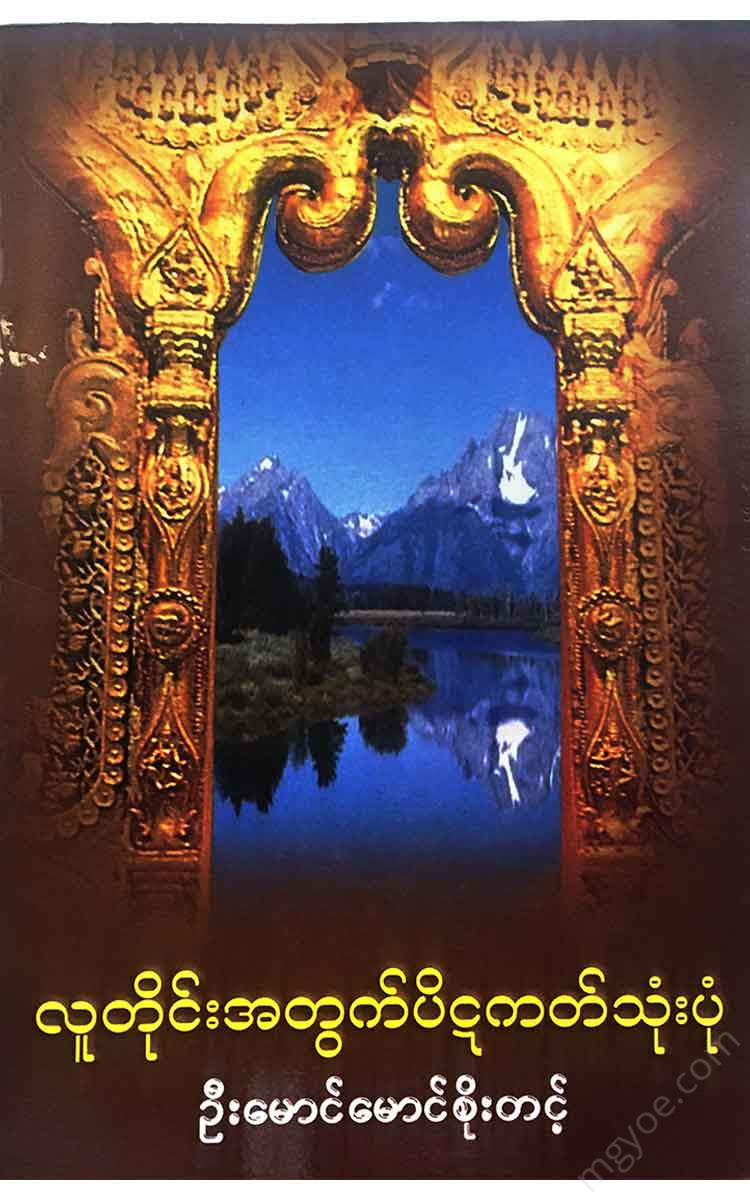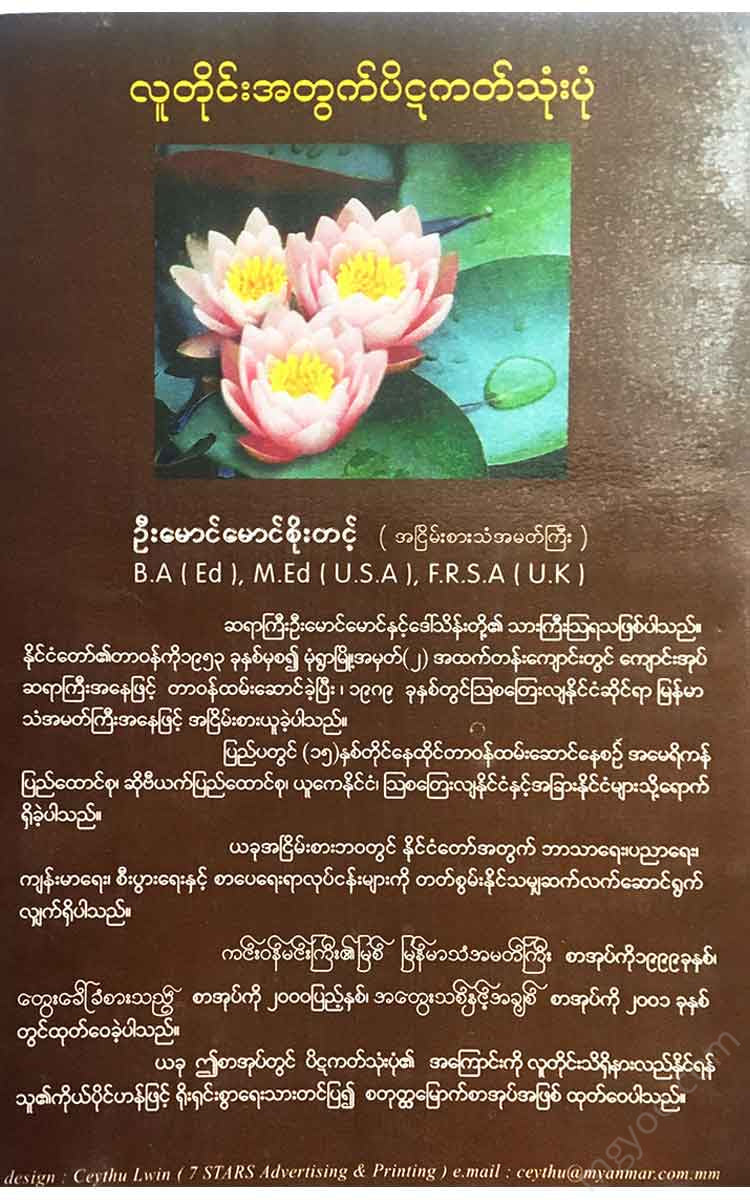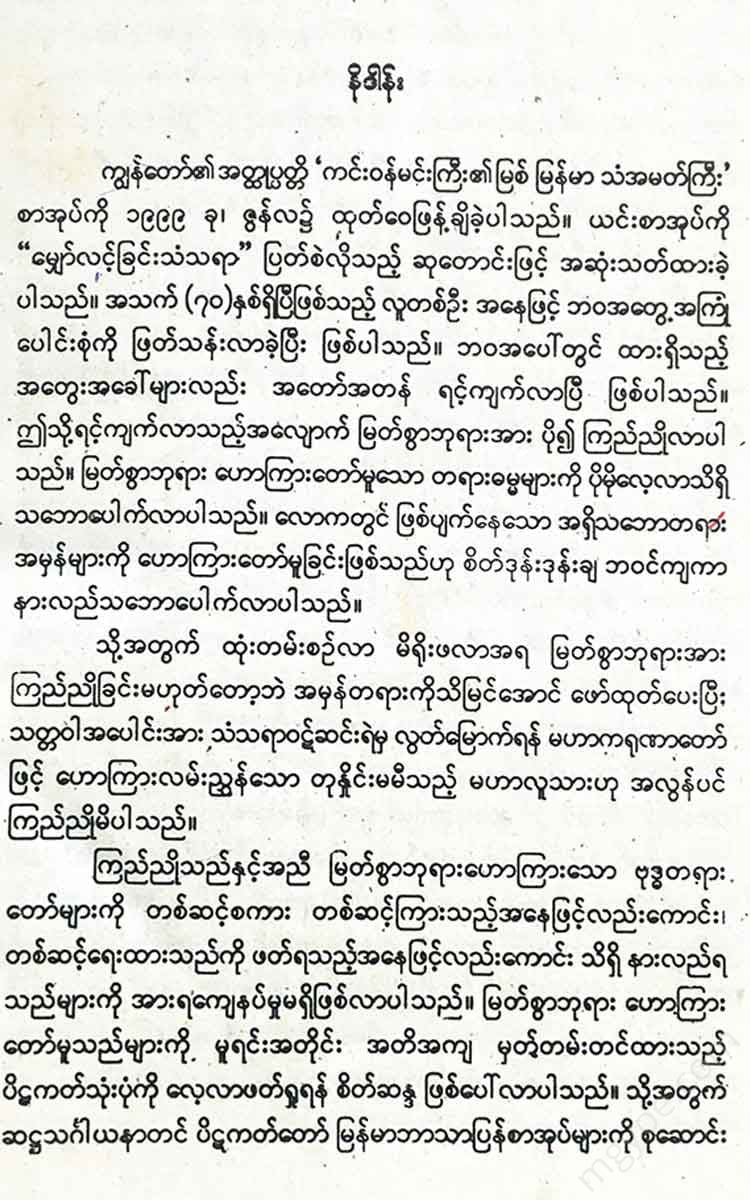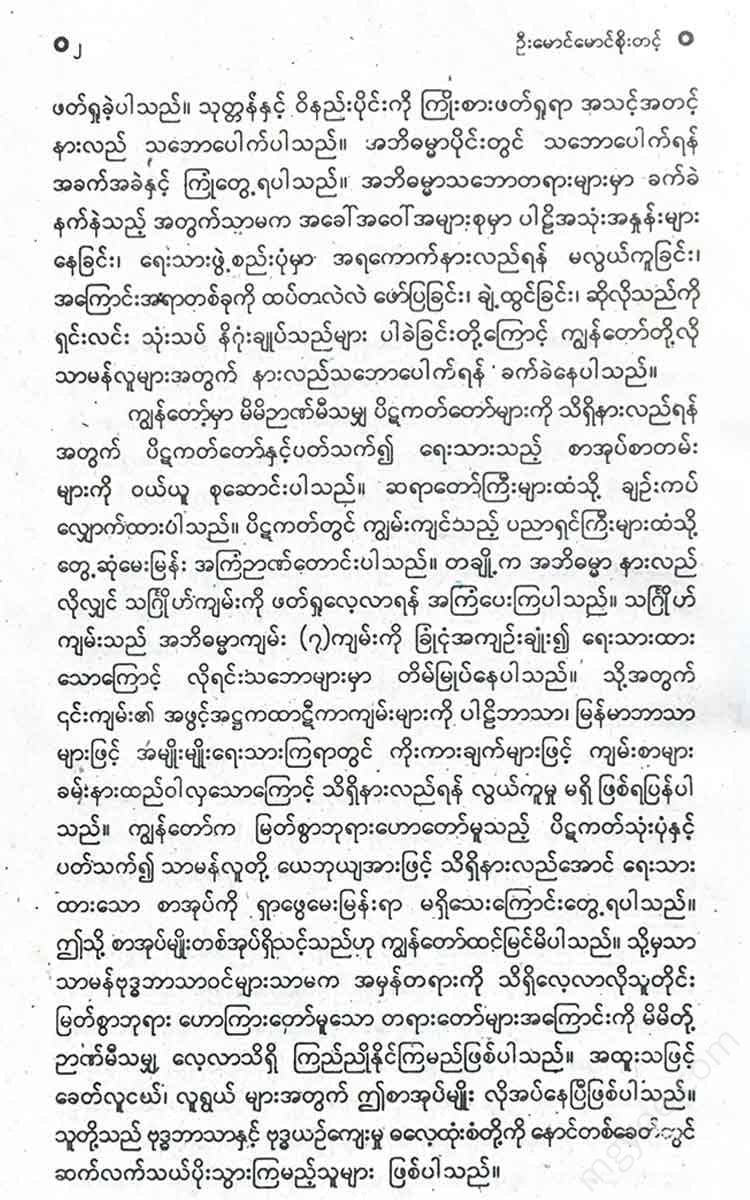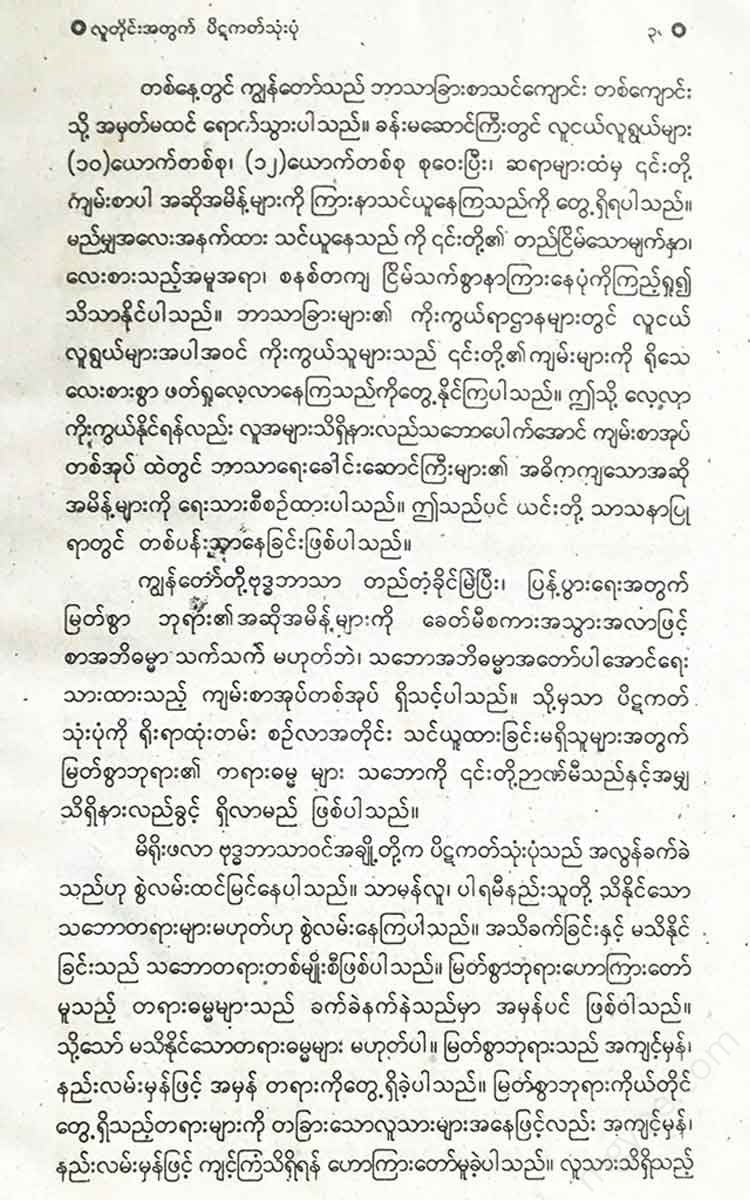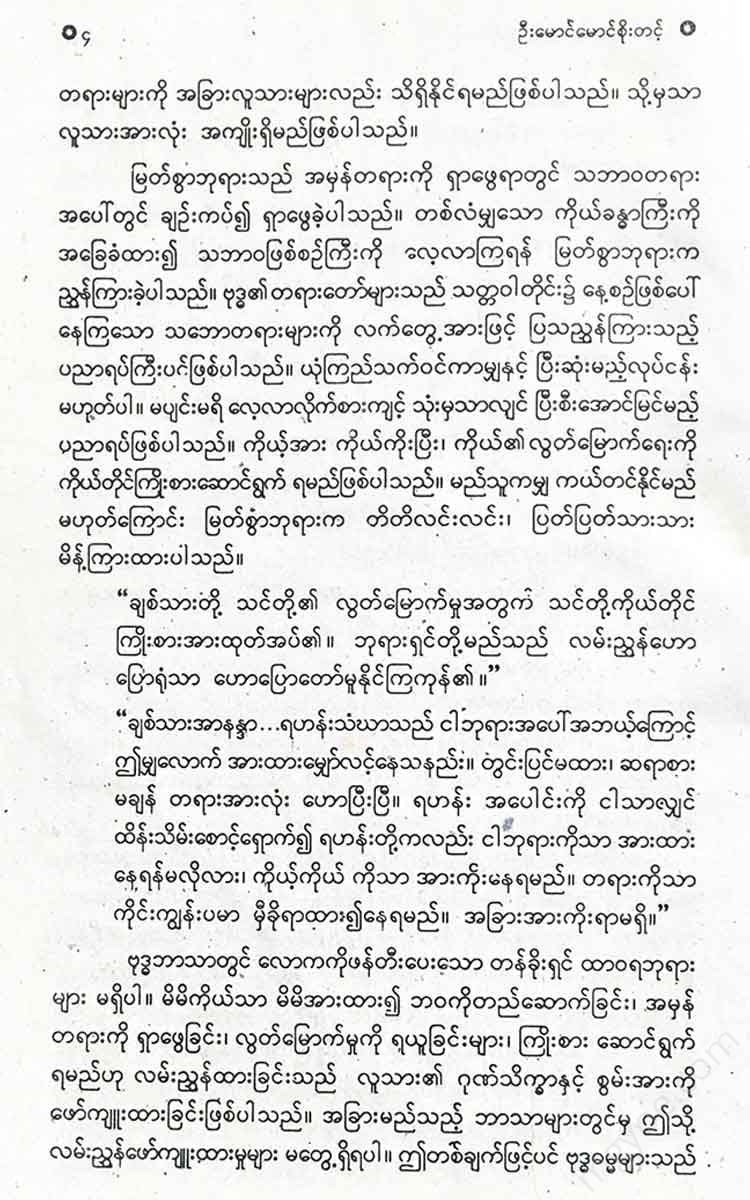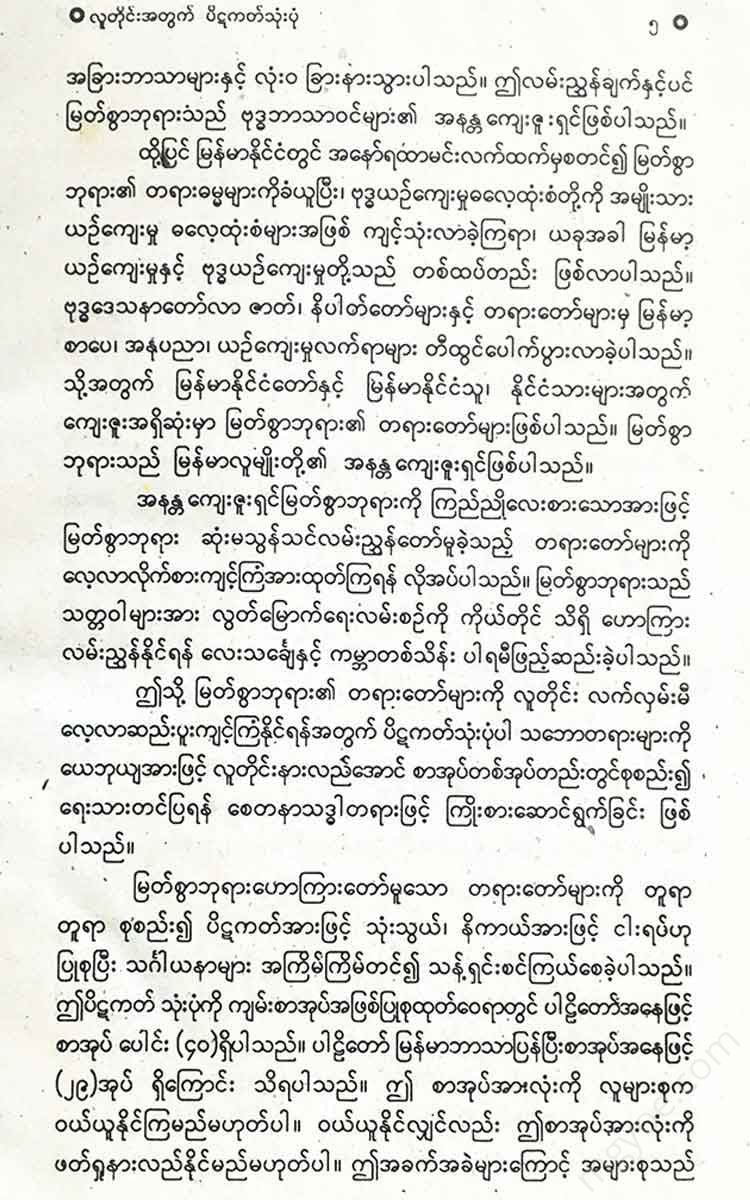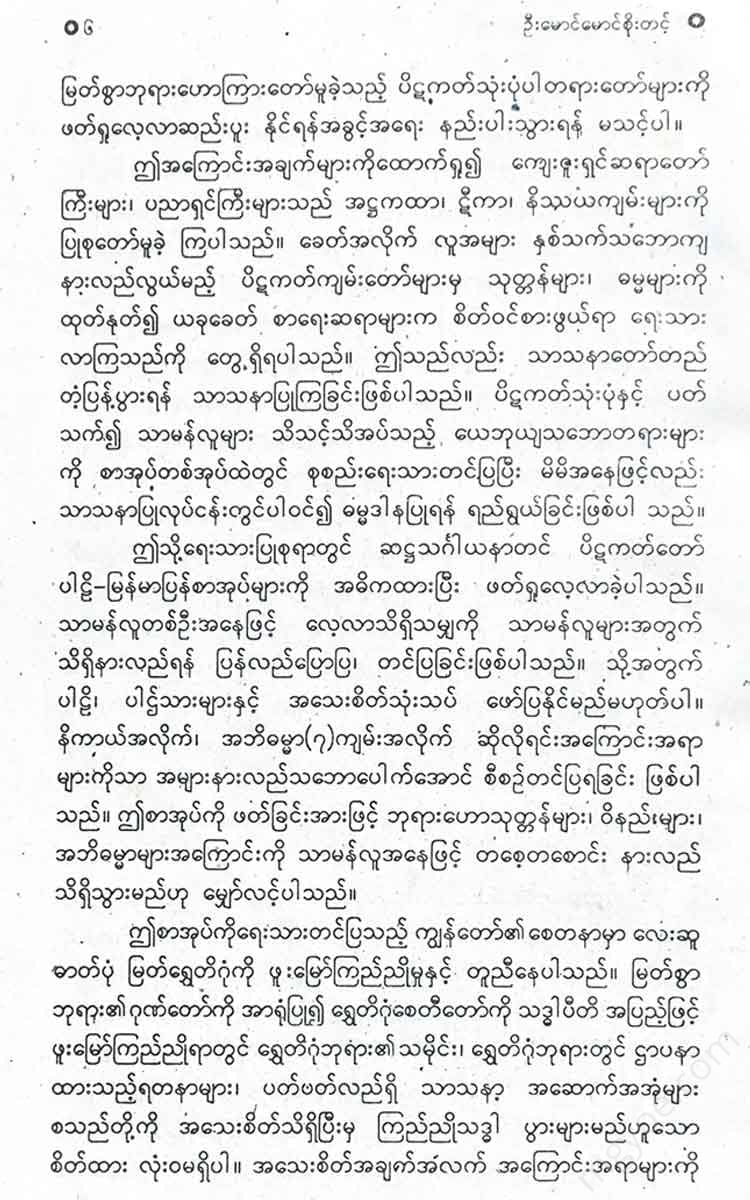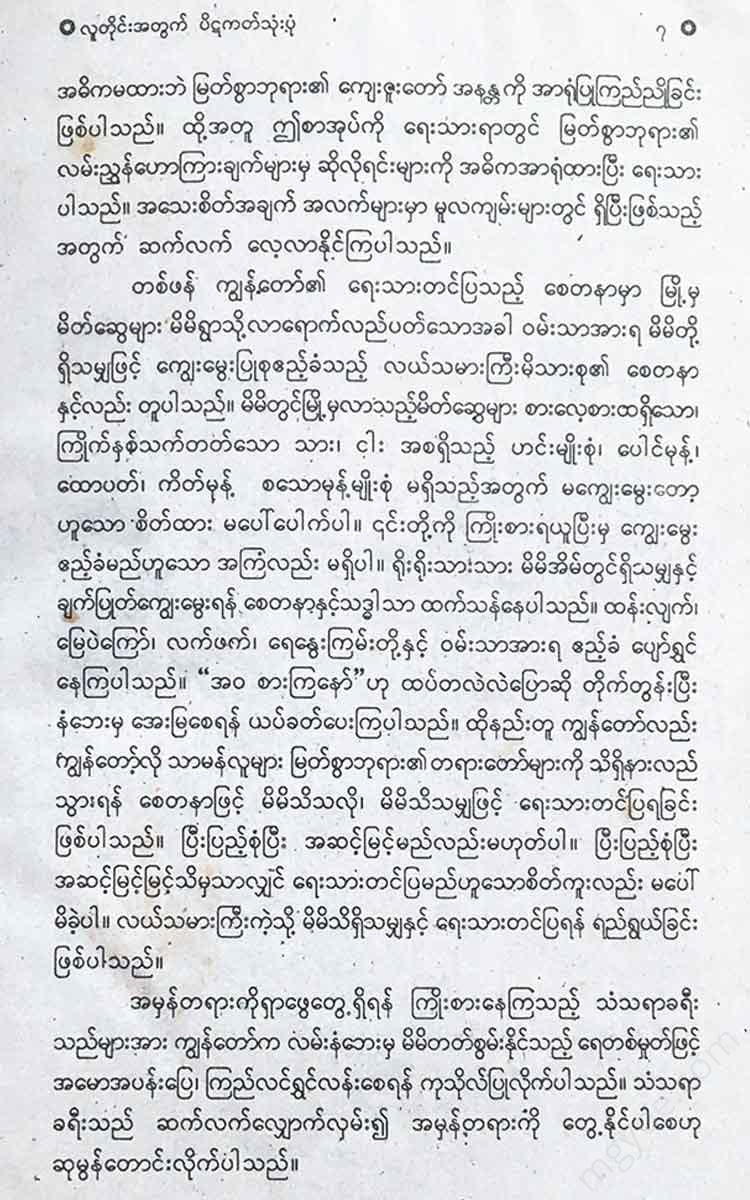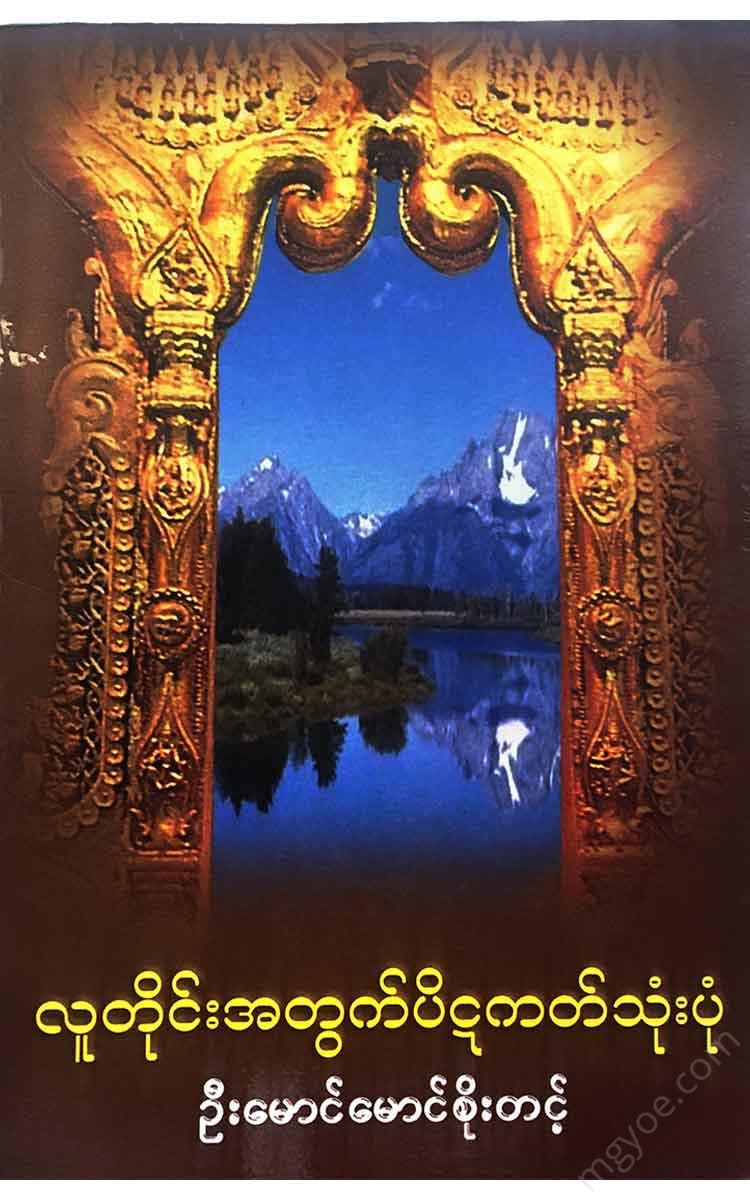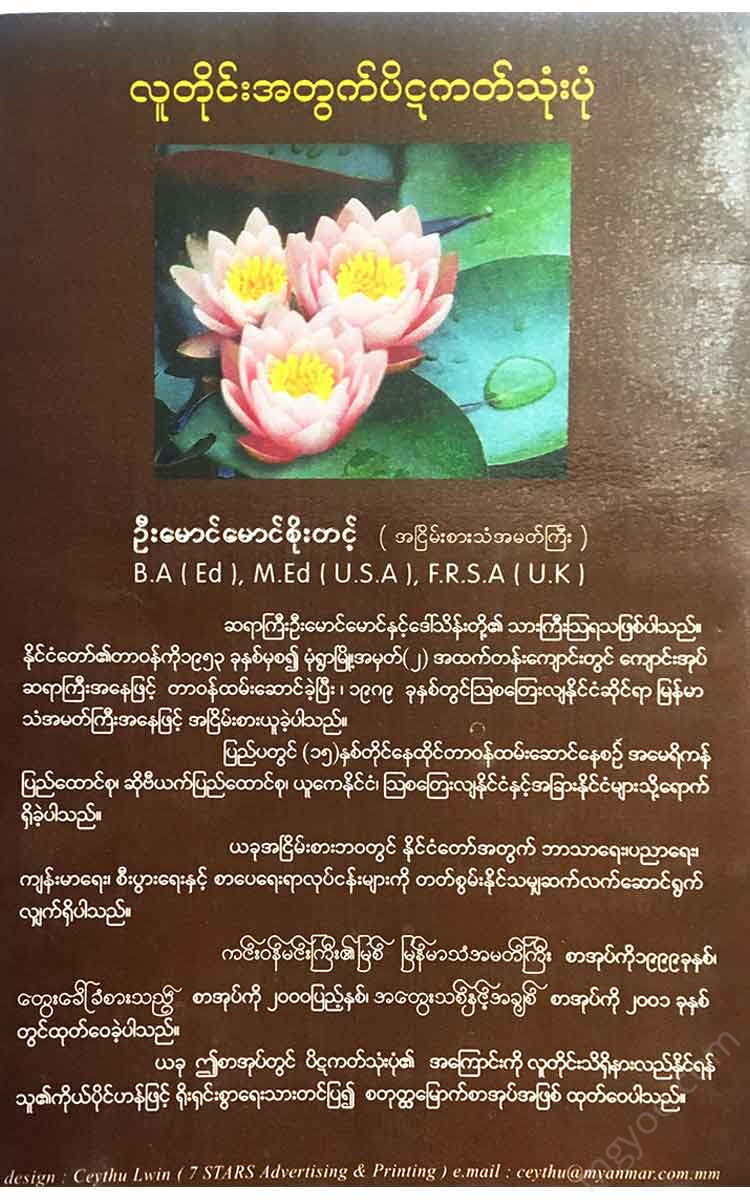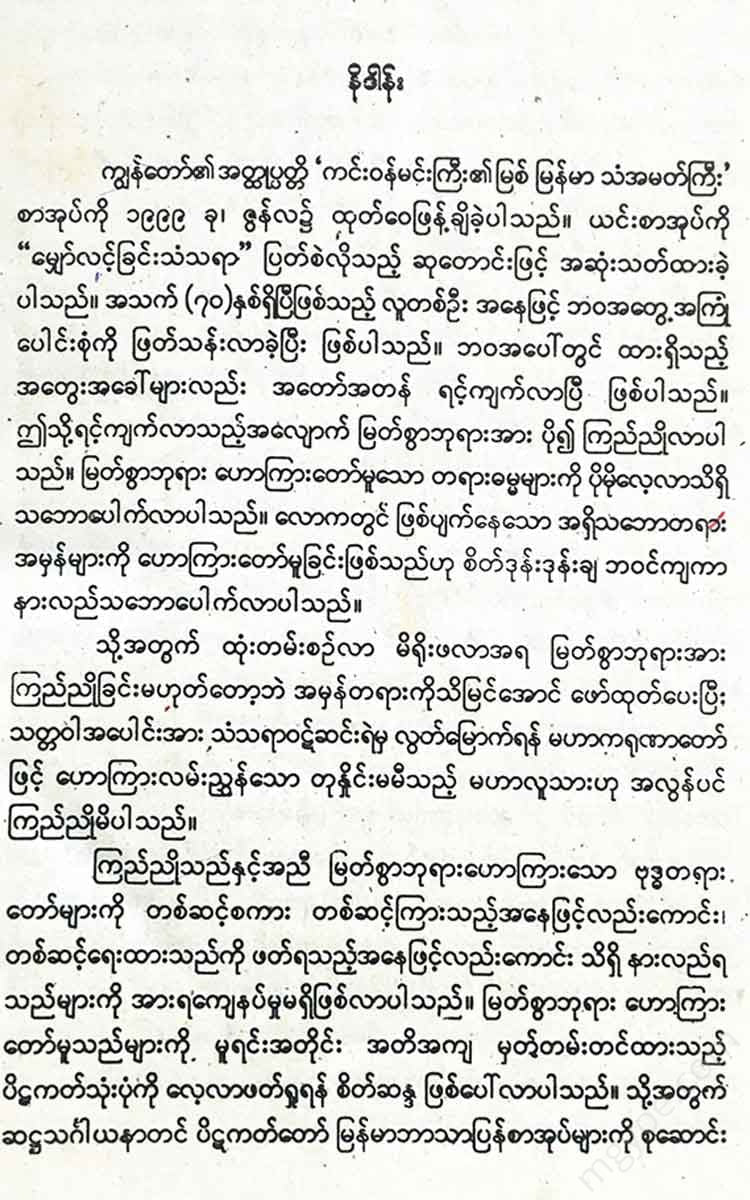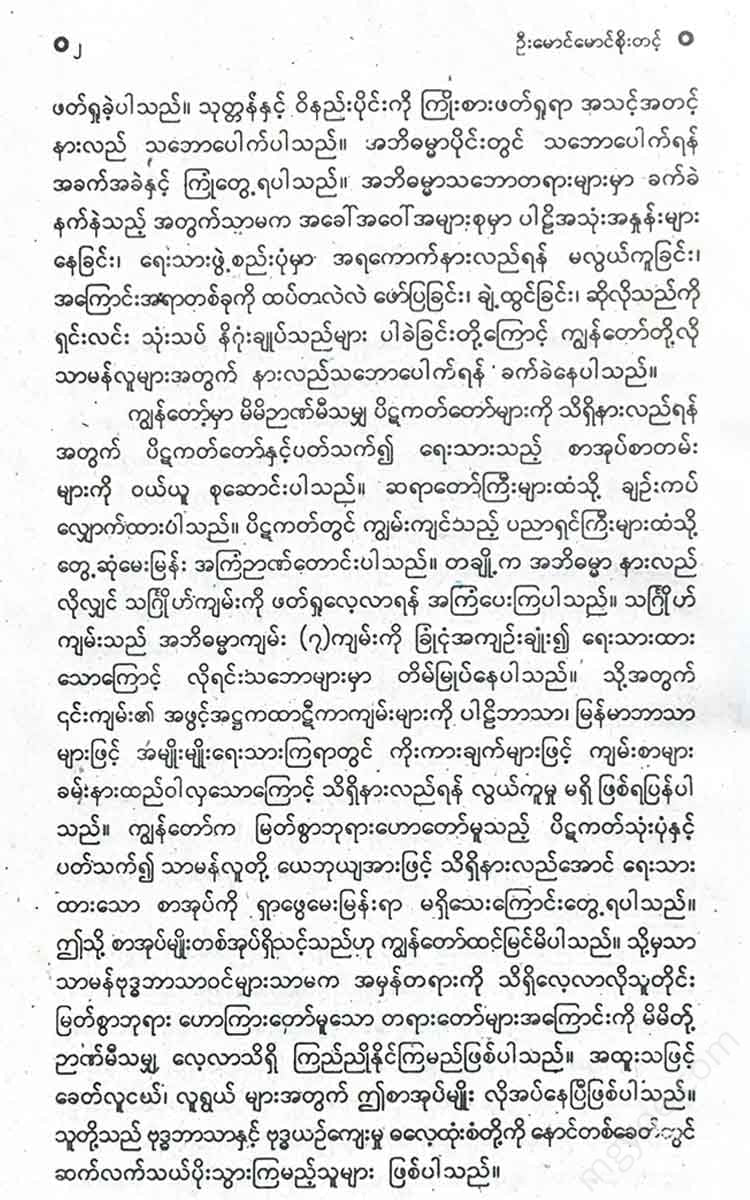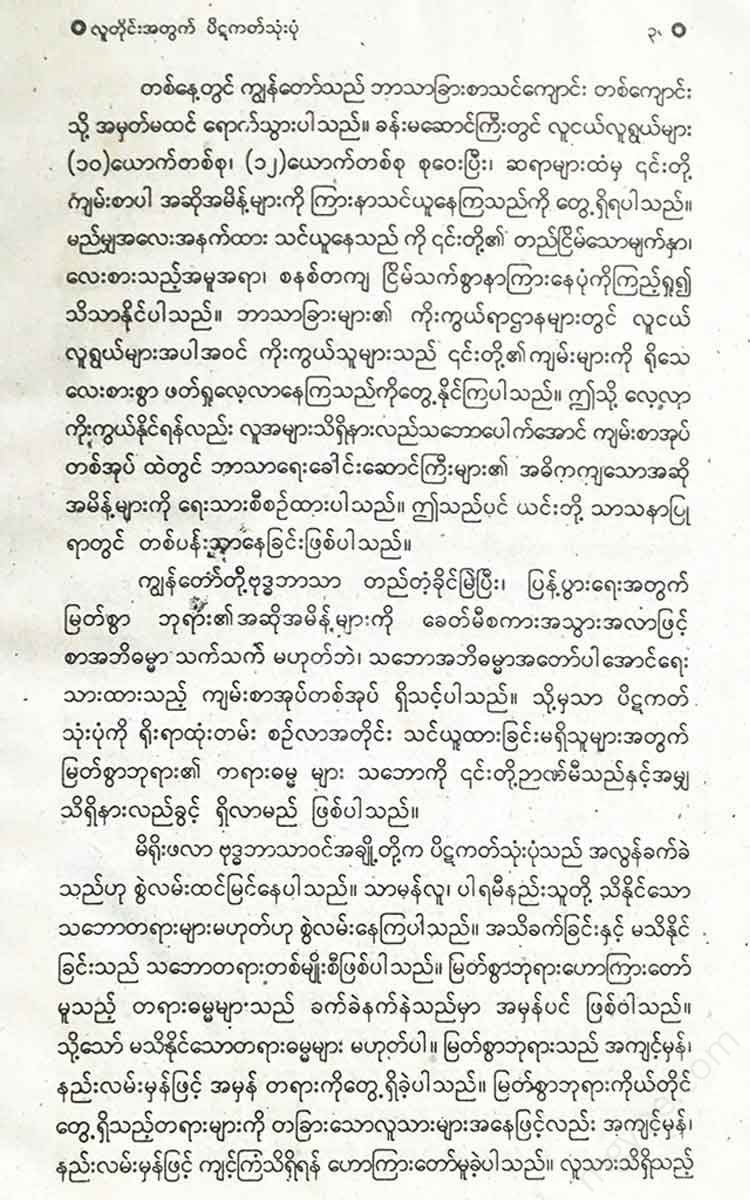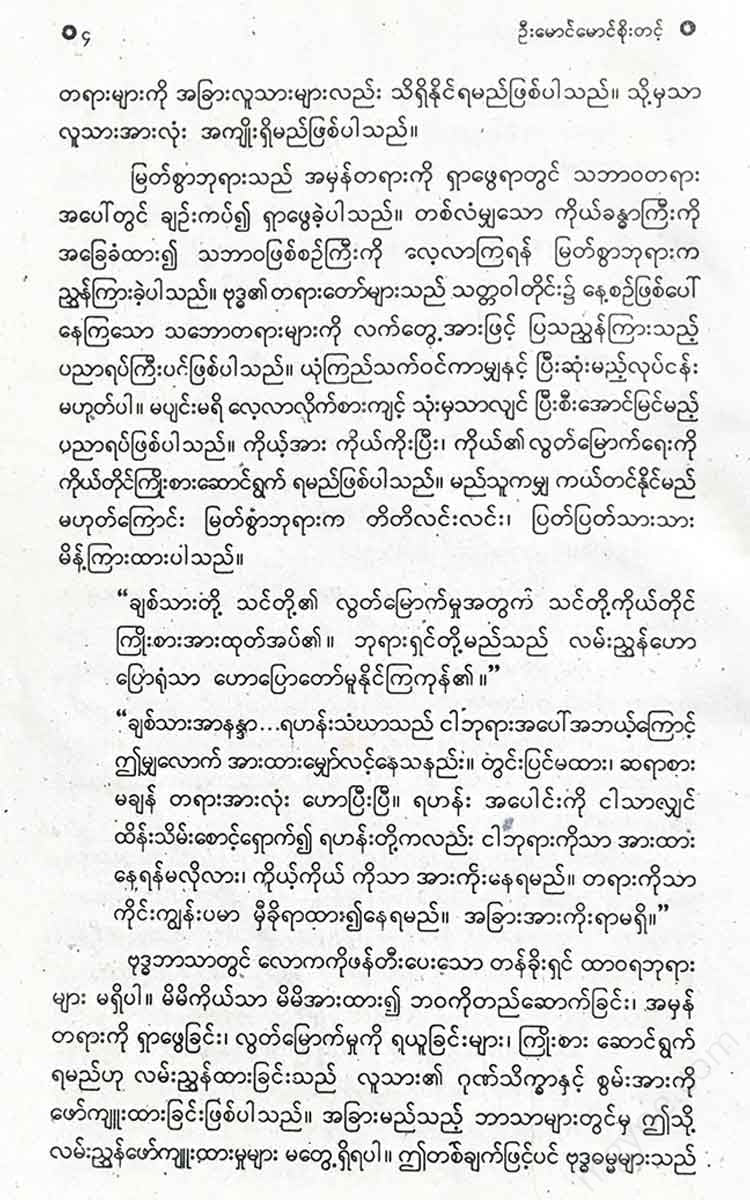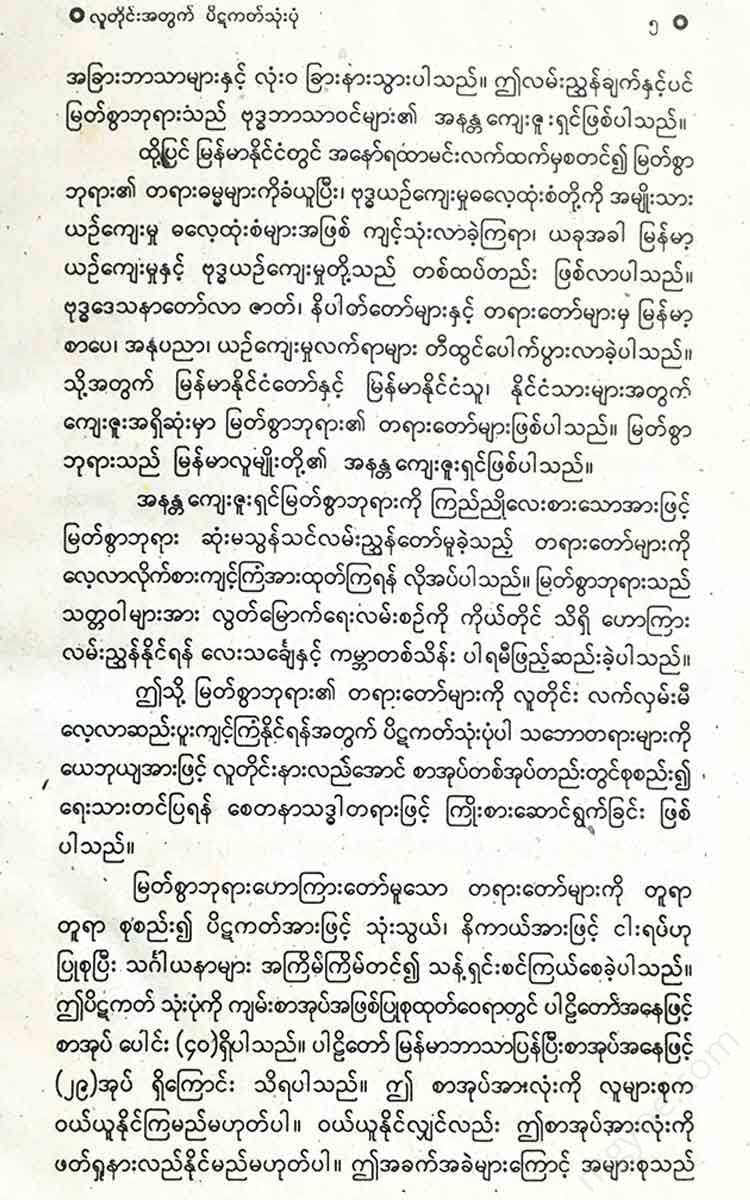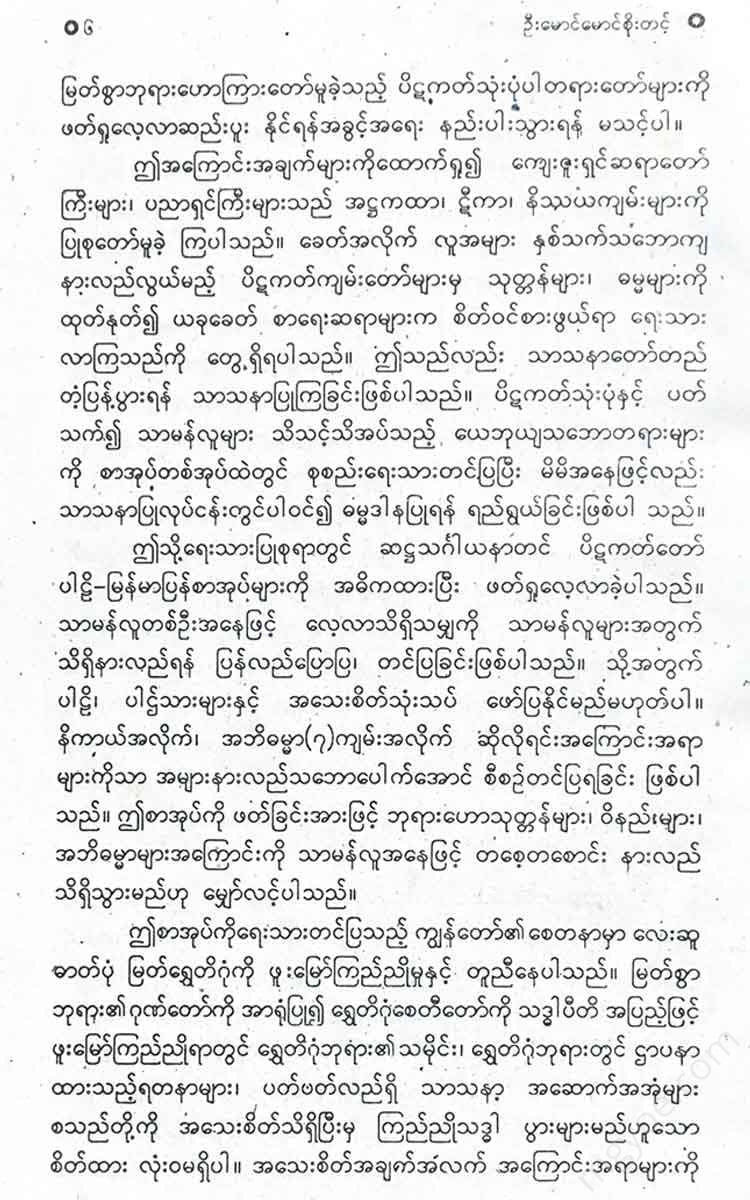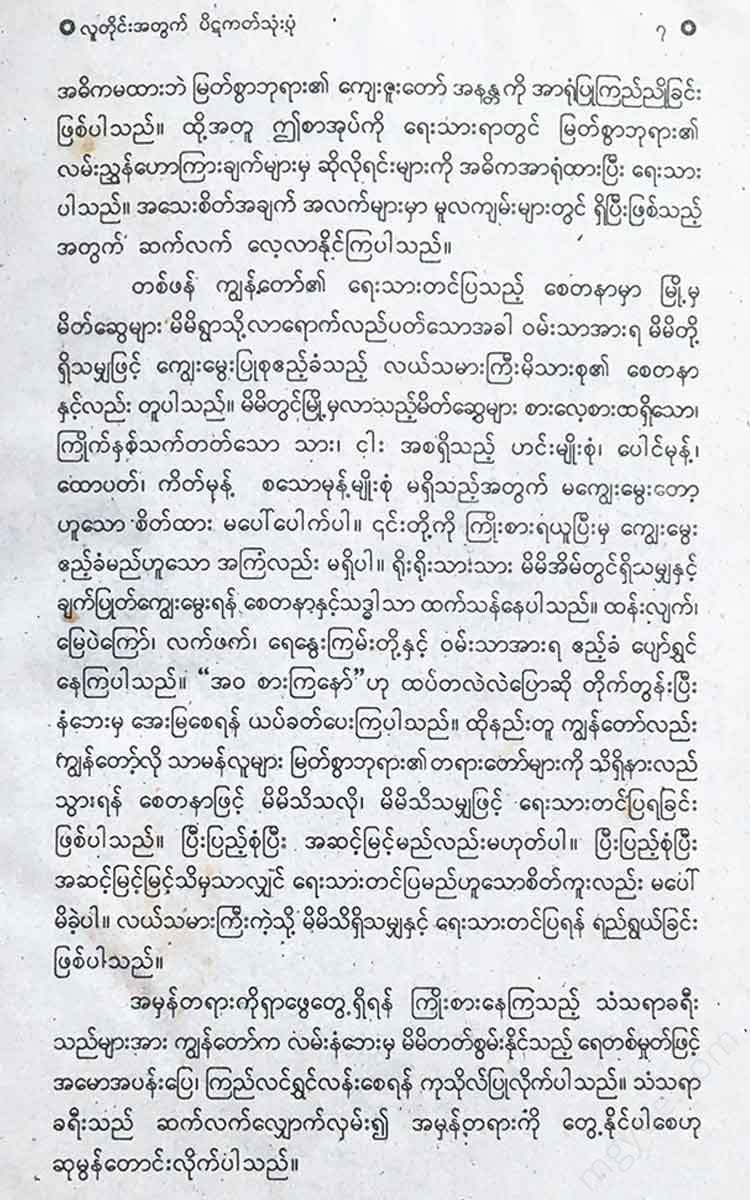Other Websites
U Maung Maung Soe Tint - The Three Realms of the Pitika for Everyone
U Maung Maung Soe Tint - The Three Realms of the Pitika for Everyone
Couldn't load pickup availability
The three Pitakas were formed from the teachings of the Buddha. The three jewels are the Buddha's Dhamma and Sangha. The Buddha's enlightenment gave us the opportunity to hear and understand the true Dhamma. The Buddha's teachings are summarized to increase our faith and devotion to the Blessed One.
The Bodhisattva Sumedharatha prayed to the Buddha, who told him that he would become a Buddha. He prayed to the Buddha with the three great goals of becoming a Buddha who would bring happiness to the world, his relatives, and save all beings from the suffering of samsara. He practiced the ten virtues of charity, virtue, renunciation, wisdom, courage, truthfulness, mindfulness, love, and equanimity for many lifetimes. He performed the five great renunciations (Panjamaha Parisaga), which were: renunciation of country, kingdom, throne, and wealth; renunciation of children, renunciation of wife, and renunciation of his body and even his life. Thus, the Buddha practiced for four aeons and one hundred thousand worlds to become a Buddha in order to save human beings from the suffering of samsara.
Having thus fulfilled his paramis, he was conceived on Thursday, the full moon of the month of Vaso, in the womb of Maya Devi, the great queen of King Suddhodana of Kapilavattva, in order to manifest as a Buddha for the benefit and happiness of all beings.
While his mother, Maya, was on her way to the land of Devadaha, she stopped at the Lumbini Botanical Garden and gave birth to the Buddha on Friday, the full moon of the month of Kasona, in the 68th year of the Maha Sakya Era.
Seven (7) Brahmins, who were well-known astrologers, looked at the characteristics of the Buddha's body and predicted that if he lived in human society, he would become the king of the universe, and if he went into the forest, he would become a Buddha. The Buddha's body was called Siddhartha.
The king's father did not want his son to go out into the forest. He wanted him to be the king of the world. Therefore, when he was 16 years old, he handed over the kingship and married Yasodhara to Suyaripaka. He built three magnificent palaces and arranged for him to live happily and enjoy the pleasures of the world.
However, when the Buddha saw the four great signs of old age, sickness, death, and monks, he was terrified and decided to go into the forest to practice and seek a way out of this suffering. On the night when his first son, Rahula, was born to Queen Yasodhara, he went into the forest to seek the truth, accompanied by his wife Sanna, riding his horse Sankaka, in his 29th year of life, in the year 97 of the Maha Sakkaraja, on Monday, the full moon of the month of Vaso.
First, he visited the great ascetics Alara and Udaka and learned the method. He realized that although he achieved worldly jhanas and dhamma, it was not the path to attain omniscience. So he decided to continue his efforts and went to the Uruvela forest.
In the forest of Uruvela, he practiced the practice of the Dukkarasariyya for six years, with only skin on his bones, and he was not dead. During this practice of the Dukkarasariyya, the five monks named Kondanya, Vappa, Baddiya, Mahanam, and Assaji looked after him, hoping that if he became the Buddha, he would hear the Dhamma. When he realized that he could not attain the truth by such self-torturing practice of the Dukkarasariyya, he began to eat alms and meditated equitably. The five monks became disappointed and left. The Blessed One gave him (49) loks of milk offered by the wealthy daughter of Sujata. Then, in the evening, he went to the Bodhi tree near the Nairnassa River, spread out eight bundles of grass offered by the grass-bearer Sothiya, and sat cross-legged on it, practicing the meditation of self-reflection. He entered the fourth jhana and meditated on the Dhamma of insight. Continuing to meditate in this way, at the crack of dawn, he attained the "knowledge of the past lives and bodies of all beings," which enabled him to see the past lives and bodies of all beings.
At midnight, he attained the "divine eye" which enabled him to see the present lives and bodies of beings like a divine eye.
At dawn, he realized the truth and attained the "knowledge of the path to arahantship," which is the cessation of all defilements, defilements, and defilements.
Having thus realized the Four Noble Truths through the path of Arahantship, he attained the omniscience of seeing everything without exception, and attained Buddhahood. The day he attained Buddhahood, worthy of receiving the offerings of humans, devas, and Brahmas, was the 103rd day of the Maha Sakra, the full moon of Kason, Wednesday, when he was 35 years old.
The three powers of omniscience are: to know everything there is to know, to know the desires and natural conditions of sentient beings who will listen to the Dhamma, and to know the appropriate way to speak to them. ) . The Bodhi tree, where he attained Buddhahood,
Remembering the blessings, he spent 49 days in the seven places near the Bodhi tree, one for each of the seven days, and experienced the bliss of Nibbana. During those 49 days, he did not receive any nourishment or ablution at all, but he lived in a cool and serene state.
Then, for the benefit and happiness of all beings, he decided to begin preaching the Dhamma, and to repay the favors he had bestowed upon himself, and to repay the favors he had bestowed upon those who could understand him by preaching. He contemplated the great ascetics Alara and Udaka, who had bestowed upon him worldly and transcendental meditation, and saw that both of them had passed away and were in the realm of the unmanifest Brahma. Then, he preached the Dhamma to the five beings who had been his servants during his life of suffering, and to repay his favors, he set out on foot to the Migadavong forest near Varanasi, which was eighteen yujanas away from the Great Bodhi Tree.
He preached the first Dhamma sermon to the five monks of the fifth grade on Saturday evening, the full moon of the month of Waso, 103 CE. Then, on the fifth day of the full moon of Waso, he preached the Anatta-Sikhara Sutta, and the five monks of the fifth grade became arahants. He took his first vows with the five monks of the fifth grade in the Migadawong forest.
When he sent out monks to preach the Dhamma and to preach for the welfare of living beings, he instructed them not to travel in pairs. He himself also set out on a missionary journey.
As promised to King Bimbisara, the Buddha first went to Rajagaha, the capital of King Bimbisara, and was welcomed by the king and the people with great pomp. King Bimbisara and a large number of people arrived at the Sotapanna. King Bimbisara donated the Veluvana Garden.
He worked tirelessly for forty-five days and nights for the welfare of beings. Out of His great compassion for beings, He performed the five precepts of the Buddha every day. (a) The morning precepts began as soon as He rose from bed at dawn. The morning precepts consisted of receiving alms, giving alms to the benefactors, and preaching the appropriate devotional discourses. (b) The afternoon precepts consisted of preaching the five precepts of the Buddha, giving meditation, contemplating the conditions of beings worthy of liberation, and preaching the Dhamma to the benefactors in the evening. (c) The evening precepts consisted of answering the questions of the monks and expounding the Dhamma. (d) The midnight precepts consisted of answering the questions of the devas and Brahmas. (e) As for the dawn procession, in the first part he would walk. In the second part he would rest for a while. In the third part he would survey the entire world and contemplate those who were endowed with meritorious qualities. He would look at all beings worthy of liberation once in the morning and once in the afternoon, and no matter how far they traveled, he would always come and preach the Dhamma. -
The Buddha worked tirelessly for the benefit of beings. He traveled to all regions and preached the Dhamma. He visited and preached in all the cities and towns of Varanasi, Rajagaha, Vesali, Sansumaragiri, Kosambi, Savatthi, and Kapilavatthu. (7) He preached and preached in the Tavatimsa celestial realm.
Because he preached the Dhamma for 45 years, the Blessed One
Workers from all walks of life, regardless of race, religion, or social class, have come to worship at the monastery. Thanks to their care and support, the religion has flourished and spread.
The Buddha encountered various difficulties, obstacles, and worldly troubles in his mission. The Buddha overcame them with the power of his perfections, love, and patience. Therefore, the Buddha is a true conqueror. The detailed history of the Buddha's work for the benefit of beings for these (45) years is recorded in books such as the Buddha's Book of Life.
(45) While performing the last of his ordinations in the small village of Veluva, he suffered a severe illness that nearly killed him. He felt that he should not pass away without informing all his disciples and monks, so he entered the Phala Samabhaka, a life-sustaining body, and recovered through the power of the Dhamma.
Then, while residing at the Sapala pagoda in the land of Vesali, he abandoned the practice of maintenance and care for the sake of longevity. He announced that he would attain Parinibbana in (3) months. The Blessed One gathered the monks at the Pyasattha monastery in the Migadavong forest in the land of Vesali, and the Blessed One warned them that he would soon be leaving, and that they should cultivate the three virtues of virtue, concentration, and wisdom with unwavering mindfulness. When he reached the land of Pava, the goldsmith was residing in the mango garden of Sunda, and he ate the white pig offered by Sunda, and he suffered from severe diarrhea. However, on his way to Kusinara, which was only three gavutas away, he was so tired that he had to rest (25) times on the way. He endured such suffering and hardship to free the only one, Subhadda Parivoja.
The Buddha lay down for the last time on a palanquin, with his head to the north, among the young palanquin trees of the Malla family in Kusinara. The pollen of the palanquin flowers fell, and it seemed as if he was making a final offering to the Buddha. The whole world was in mourning. The Buddha, in accordance with his usual practice, preached the Dhamma to all beings, gods, Brahmas, and humans, until his passing away. He preached the Dhamma to Subhadda, who was a monk. Subhadda, having taken up meditation and practiced the Dhamma, became an arahant before the Buddha passed away, and became the last disciple of the Buddha.
After thus striving with great compassion for the benefit of the world until the very end, the Buddha passed away with the morning light at dawn on Tuesday, the 148th day of the full moon of the Kason month, at the age of 80.
The fact that the Buddha was an incomparably great human being, the Buddha, is evident from some of the following facts.
(a) The omniscient Buddha who will save all beings from the suffering of samsara.
To achieve this, he practiced for four hundred thousand years and a hundred thousand worlds.
(b) After becoming a Buddha, he spent only a little time each day for (45) years.
For almost 24 hours, I have been practicing the Dhamma for the welfare of all beings.
He preached.
(c) As a human being, the truths that he has discovered through his own practice should be shared with others.
Human beings should also practice with the three perfections of virtue, integrity, and wisdom.
He preached that it is possible to achieve it and praised the power and dignity of man.
Change.
(d) He encourages and guides us to rely on ourselves.
(e) In the religious community, there is no distinction between low, middle, or high caste, king, prince,
Satta, all defecators are treated equally and fairly.
Set as one, one, and respectfully according to the ritual.
He established a system for dealing with them.
(f) He himself sets an example for us to know the truth of grace.
(g) Even God can understand the worldly wealth and the nature of impermanence, suffering, and emptiness.
He showed that there is transcendence and the truth of nature is revealed.
He preached,
The most noble example of all the world's people, followed with respect and devotion
The Lord of Grace, the Great One, incomparable in His love and mercy,
I respectfully offer my respects to the Buddha.
